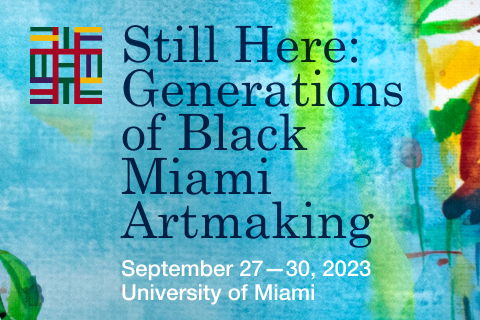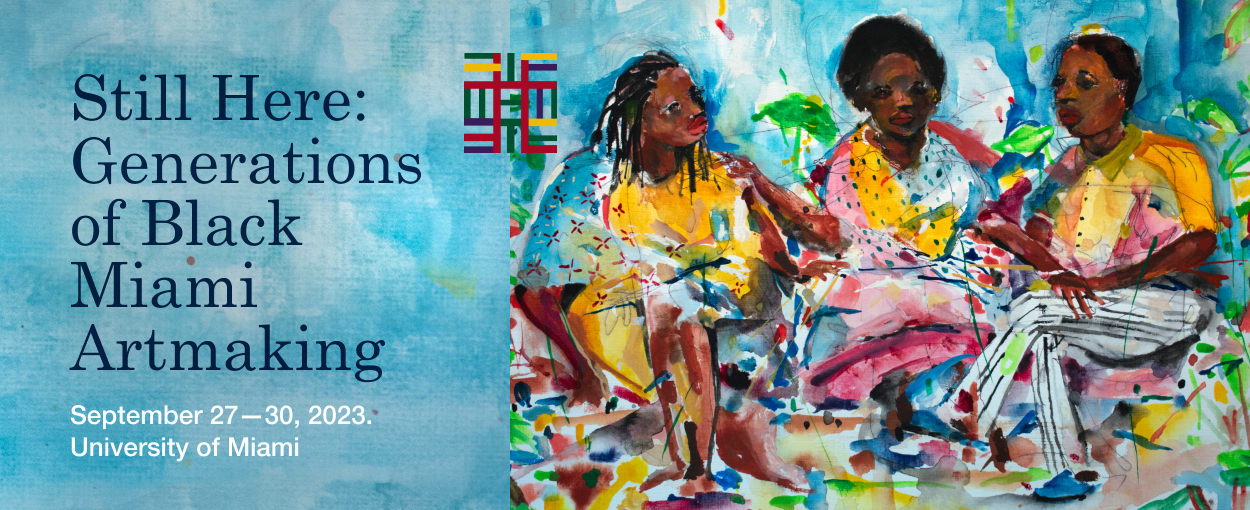Still Here: Generations of Black Miami Artmaking convened the first-ever intergenerational conversation of Black Miami visual artists working from the 1960s to the present. This gathering centered the aesthetic practices, life histories, and creative archives of artists from the city’s heterogenous Black neighborhoods, including West Coconut Grove, Overtown, Brownsville, Liberty City, Carol City, Miami Gardens, Cutler Ridge, South Miami, Richmond Heights, Homestead, and Little Haiti.
Miami is celebrated as the crossroads of people, ideas, and multicultural “Americanness.” Black displacement, however, has been and currently stands at the center of the city’s urgent housing crisis, neighborhood shifts, climate change, and gentrification. Throughout the convening, interdisciplinary plenaries and panels examined how artists have represented Miami’s dynamic and intersectional social histories as a Jim Crow City in the US South with deep national, transnational and hemispheric ties.
Participants included Lauren Baccus, Germane Barnes, Donnamarie Baptiste, Dejha Carrington, Aldeide Delgado, Edouard Duval-Carrié, Donette Francis, Rosie Gordon-Wallace, Sharony Green, Allison Harris, Nhadya Lawes, Franklin Sirmans, and Marie Vickles; and, artists Morel Doucet, Chris Friday, GeoVanna Gonzalez, Charles Humes, Jr., Loni Johnson, Kandy G. Lopez, T. Eliott Mansa, Sydney Rose Maubert, Arsimmer McCoy, Jared McGriff, Reginald O’Neal, Michelle Lisa Polissaint, Terence Price II, Chire "VantaBlack" Regans, Roscoè B. Thické III, Juana Valdés, and Roland Woods, Jr.
Still Here: Generations of Black Miami Artmaking is created by the University of Miami Center for Global Black Studies in partnership with Commissioner and sponsored by the Mellon Foundation and the Terra Foundation of American Art.
Learn More About Commissioner
Digitial Invitation
Artwork: Jared McGriff, Taking the Time (2018), detail.





